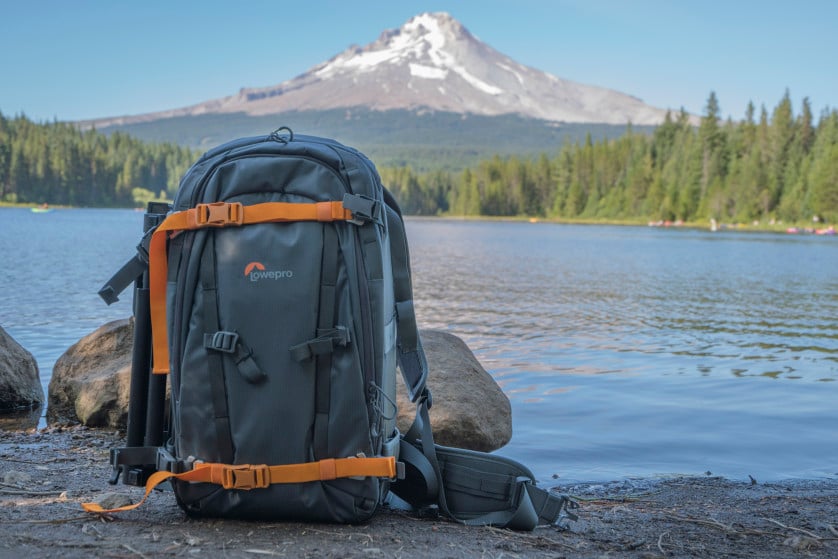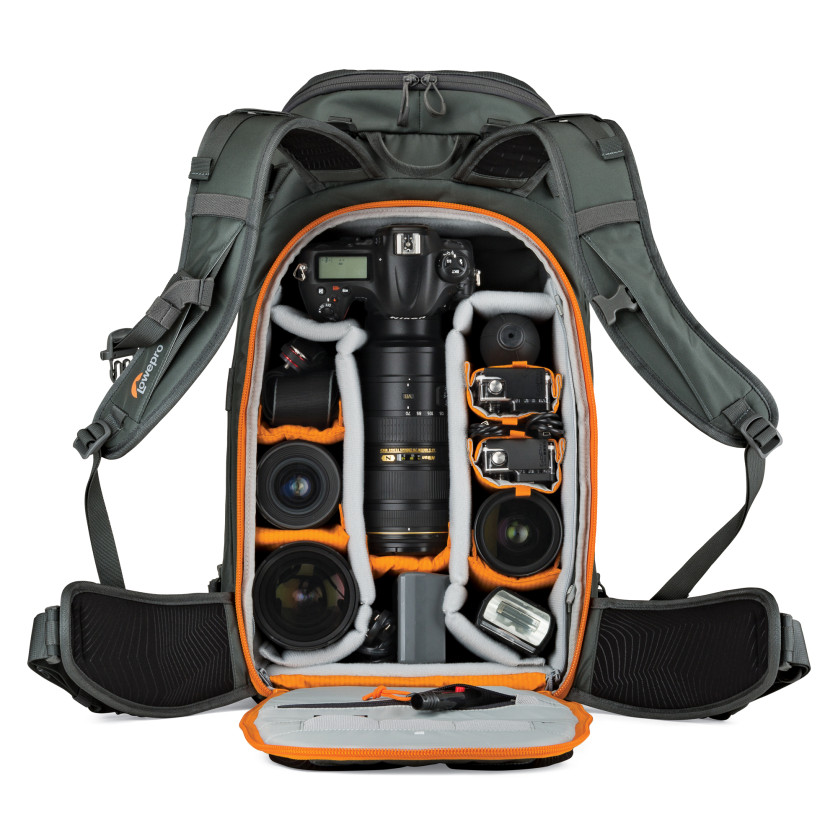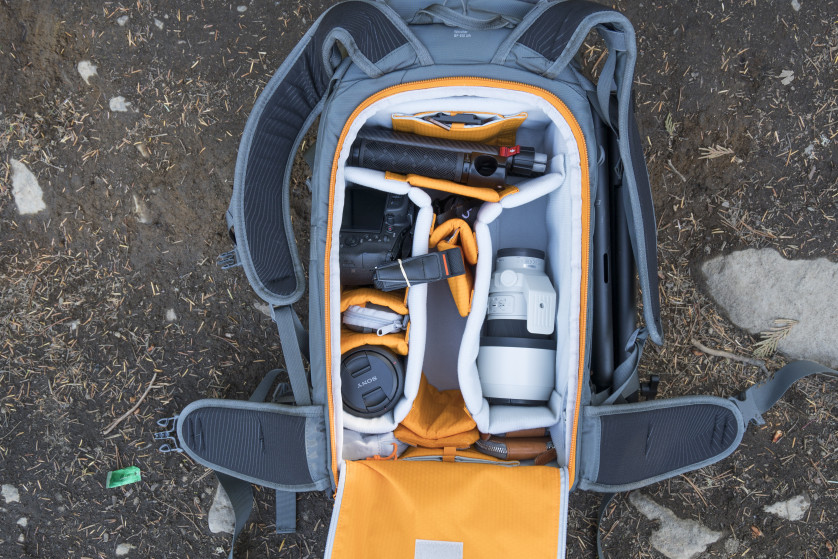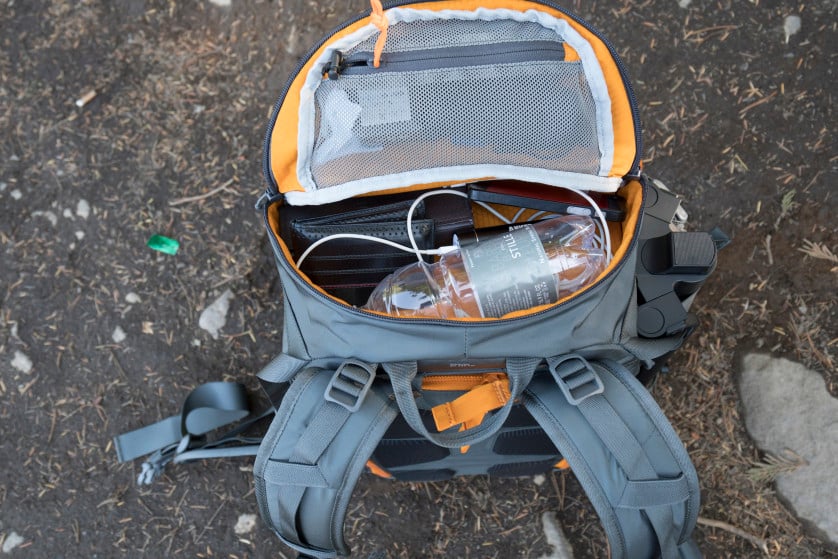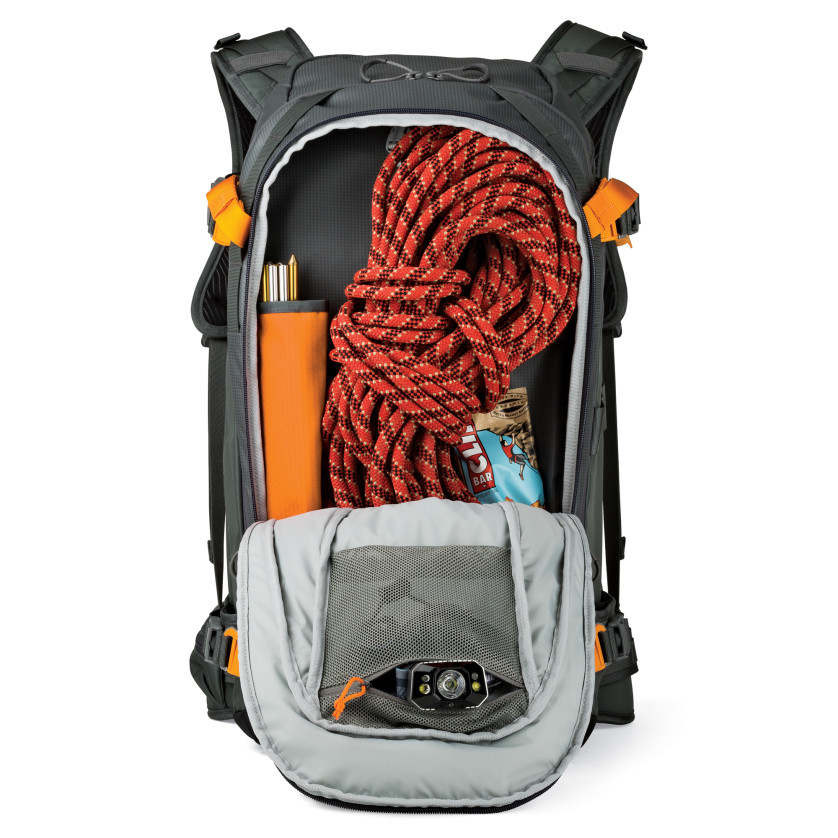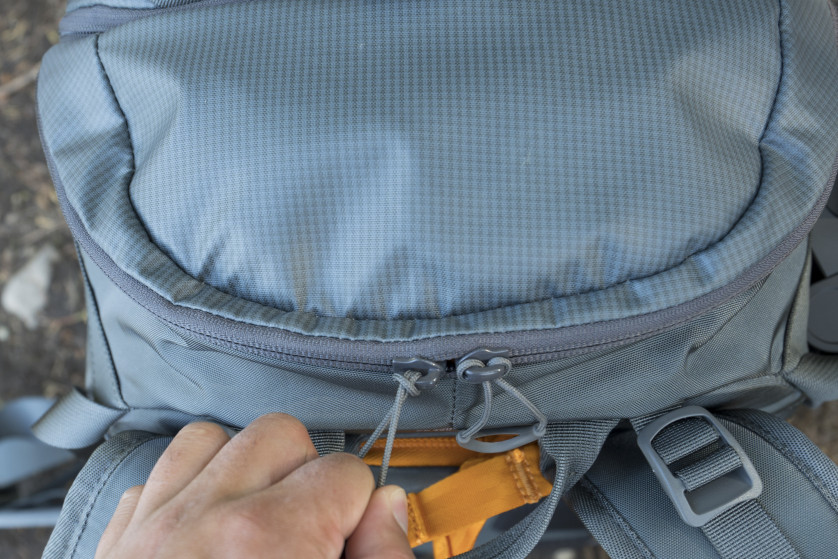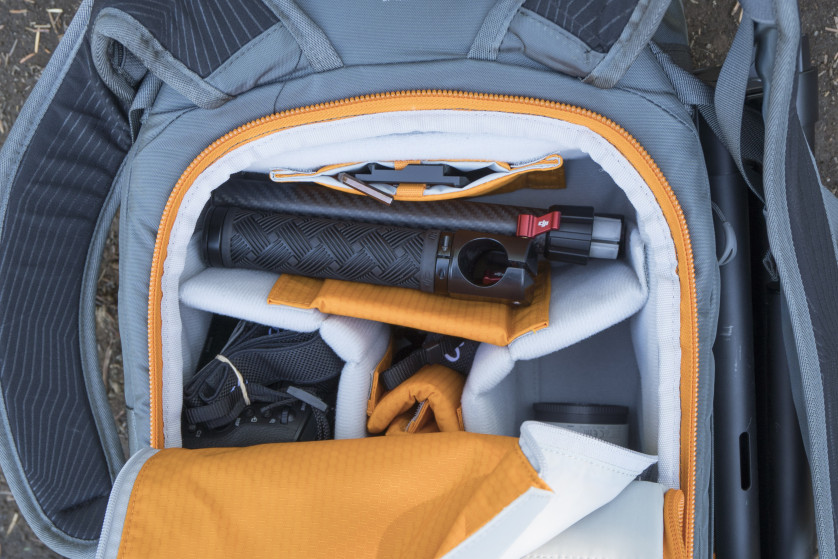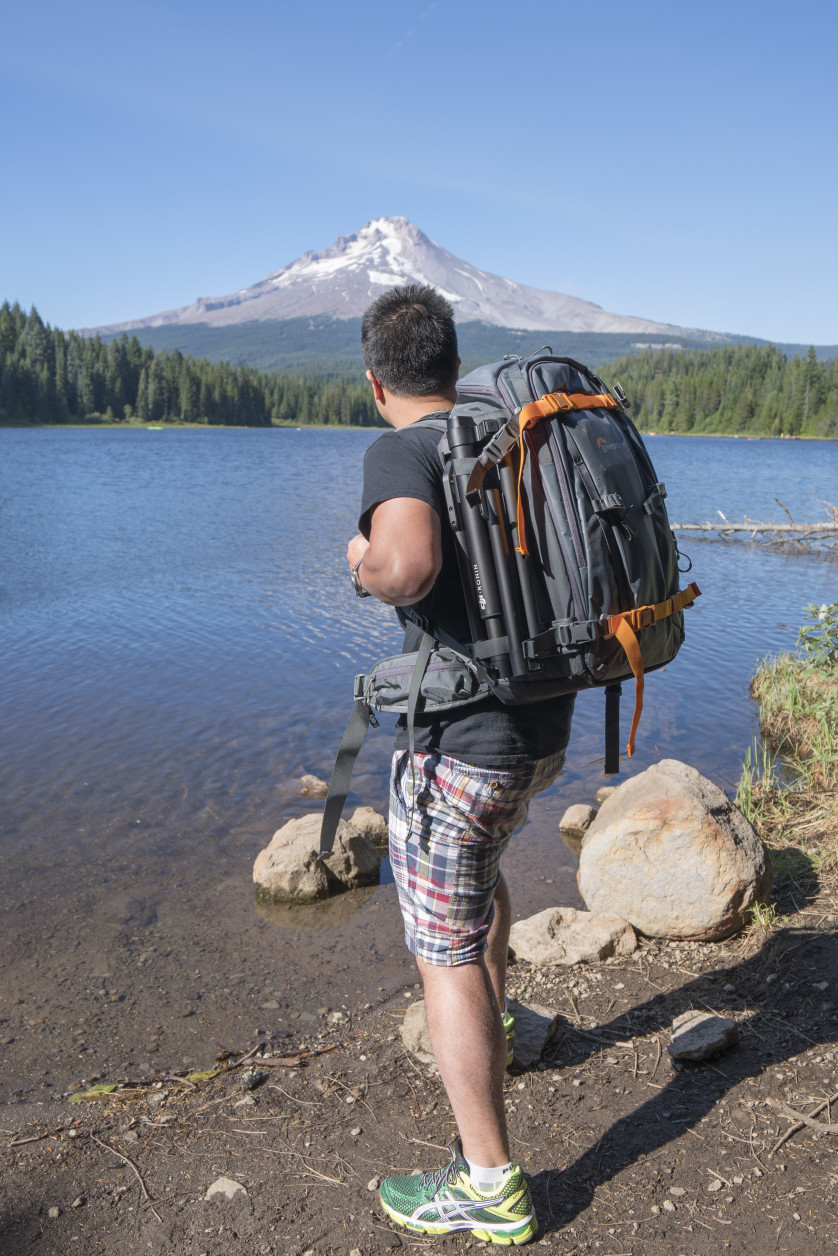Lowepro began as an adventure brand, but over the years they seemed to have deviated from that core. Now with F-Stop clearly the favorite in that department, Lowepro was close to becoming a forgotten name in the minds of adventure shooters. The Whistler is Lowepro’s grand return, and it’s a fantastic iteration on a popular design that, in my opinion, should return the brand back to the conversation.
Let’s get this out of the way: The Whistler is not an original design. It’s a rear-accessible, metal-skeleton supported, internally rearrangeable design popularized by F-Stop, and this is simply Lowepro’s take on the tried-and-true design. If we forgive them for not innovating a brand new design we’ve never seen (which isn’t a requirement for making a great product, just ask Apple), we can instead focus on improvements they’ve made, and in the Whistler they abound.
For this review, I was using the larger of the two backpacks, the 450AW. This particular Whistler size is capable of carrying an impressive amount of gear. For example…
Personally, I was able to bring two bodies (a GH4 and a 5D Mark III), multiple lenses, sound equipment and a Ronin-M all on my back during a trip to Portland… All of this, and it fit in the overhead bin both there and back on Alaska Airlines. Out by a lake at the base of Mt. Hood, this is my messily tossed together kit I had for the day (minus, obviously the camera I was shooting this with and a lens, which lived in the center):
One of the design improvements I mentioned is that Lowepro has a sewn partition between the very top compartment of the bag and the interior shown above. This allows you to store objects on top of the interior compartment without worrying about smashing it down or having objects fall behind the removable interior (this is a major problem with the F-Stop bags). Depending on the day, I can carry sound equipment, cables, extension cords, external monitors or whatever else in the top compartment and not worry about losing any of it in the nooks and crannies of the bag. On this particular day, the top compartment was just full of essentials.
The downside to this design is that you are somewhat limited in storage up there, and because Lowepro only has one interior removable box option at the moment, you’ll find that the amount of space you have for items like jackets or sweatshirts in this bag is quite limited. So yes, there are pros and cons to their design decision, so bear those in mind.
Speaking of that interior box, you can remove it if you intend to use the Whistler for non-photo-centric purposes. The box itself is held in place by four button-tabs so that it doesn’t accidentally fall out, but once unhitched the cavernous interior is yours to do what you like.
Though the bag comes with an all weather cover, you more often than not, won’t need it. This is because Lowepro has designed the exterior to be weather resistant, able to repel water, dust and sand pretty effectively. The material is like a tightly woven plastic, which water and mud slip off of quite easily. I wouldn’t say it can handle a downpour, but heavy mist, snow and light drizzle are not a problem for this bag.
The exterior is covered in buckles and nylon straps that let you attach a items like tripods, stabilizers, skis, snowboards and other large items (like sliders and jibs) to both sides and the back of the bag. It was because of these straps I was able to bring a tripod, my Ronin-M and its balancing stand with me hiking. Like I said earlier, this bag is capable of carrying a lot of gear. The only problem with the design of the sides of the bag is that they replaced mesh pockets with small, tough nylon straps. This makes it a tad harder to get your tripod properly fitted into place, as tripod feet vary in size. It’s a minor quibble, but one that needed to be pointed out. Below you can see the clip lock sitting on top of the non-adjustable strap that hugs the side of the bag:
Sure, you can try and hold the tripod in place with that clip, but the base of the feet still hang free, which makes me nervous as I have had bad experiences with tripods coming loose while I’m moving quickly over rough terrain.
The Whistler also has a front-facing pocket that is quite deep, ideal for laptops or tablets. The only downside of placing something like a laptop in there is that it is pretty close to the exterior of the bag, meaning there isn’t as much padding and protection as there is in other places on the bag.
I keep mentioning how much gear this backpack can hold, but along with that question is the concern for weight. Yes, this bag can get very, very heavy. Unfortunately, the bag itself (totally empty) isn’t particularly light. However, the adjustable arm straps, internal aluminum skeleton, smartly designed padding for your back and the very effective waist and chest straps work incredibly well. When I lifted the bag, fully loaded, it was challenging. I gave an audible grunt. But when I put the pack on and adjusted all the straps, the load felt surprisingly manageable. What was seemingly a challenge to carry if I were to hold it with my arms was very well handled and distributed once I had it on my back.
Furthermore, the Whistler is really, really comfortable. The way Lowepro has designed their “Activzone” (the area where the bag makes contact with your back) is shockingly good at its job. The padding and its placement along the back helped alleviate sweating (seriously, my back doesn’t sweat much at all when I wear the Whistler) and the pads lean comfortably on my back. It’s really surprising how comfortable this backpack is, especially when weighed down with a ton of gear.
I want to spend a second talking about the dividers: they’re really, really nice. Though not as rigid and amazing as the ones found in the Echelon bags, the dividers are very smartly designed. Not only do they use Lowepro’s super helpful folding velcro system (which allows you to easily replace the dividers without them catching constantly where you don’t want them to), but Lowepro also introduced a nifty new feature: dividers with pockets! Now your dividers can work double duty, which for me meant holding a plate and allen wrench:
Pros:
- Heavy duty, weather resistant exterior
- Excellently designed straps provide exceptional comfort while wearing
- Main compartment for gear is large, cavernous and totally reconfigurable
- Exterior provides numerous ways to attach all manner of equipment, from photo to personal
- Dividers are smartly designed; pockets in the dividers are amazing
- A ton of ancillary compartments to store a lot of additional equipment
Cons:
- Tripod foot strap is not ideal
- Bag is pretty heavy, even when empty
- Not much room for clothing, such as jackets or sweatshirts
Through weeks of vigorous use, I have to say I’m really happy with the Lowepro Whistler. I like it more than my F-Stop Loka because of how sturdy and stiff-sided the bag is, allowing me to carry more items all around it. I also appreciate how snugly the interior compartment fits to the bag, which prevents gear from slipping behind it, which is a problem with F-Stop ICUs. I love the Whistler, and coming from a guy who has sworn off backpacks due to how tired they make my spine, this is quite a compliment. The Whistler is rugged, carries all the gear I need and is designed with the needs of adventure photographers in mind. It’s an excellent backpack with a few things that keep it from being perfect. That said, it’s the best bag they’ve ever made for adventure photographers.
We give the Lowepro Whistler four out of five stars for incredible comfort, tons of storage options and smart divider design.

